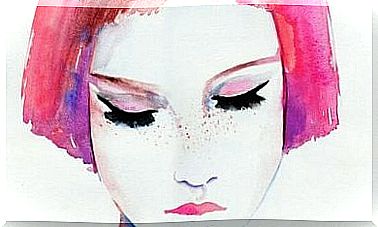Henko: To Change Without Going Back

Henko is a Japanese word that refers to a transformative change where there is no way to go back to how we once were. In many cases, it represents a step forward in our personal growth. It is proof that we should be able to invest in ourselves and our own abilities. Henko is the turning point that lifts us up and over our fears and anxieties, and transforms our inherent attitudes.
Having the ability to transform, develop, advance and expand our level of consciousness is the key to overcoming obstacles. We must be able to do this to get rid of doubts about ourselves and become stronger. Henko is the fruit of our resilience.
We could solve many of our difficulties if we introduced henko , a transformative change, into our lives. The problem is that for the most part, we are not willing to do that. Maybe we are not sure how to make a change, or it may seem scary because it is new.
We know, for example, that some people prefer to stay in their comfort zone, with the same coping strategies, even though they feel miserable. In fact, they sometimes have to make a real effort because a change would not otherwise show up.
The truth is that the unknown makes us all worried. The things we cannot predict and the things we have not anticipated are completely out of our control. When we do not handle this anxiety properly, we become emotionally exhausted.
We choose to stick to what no longer benefits us instead of embracing the necessary change. In this regard, there can be many reasons to make a change. But these three elements must exist to make a change: conviction, desire and motivation.

The risk of change is imprinted on who we are. It’s a part of us. We must take advantage of the inner feeling and use it to drive forward. We must be fearless and ready for the moment when our feet will not touch the ground.
Let us now be clear. Not every change or experience will transform us. Sometimes we make a certain type of change. When this happens, we “make a change”, but eventually we are stuck in the same routine or act again as we used to.
To grow and start on a new path, we must introduce a higher level of change. Paul Watzlawick would say that we need to make a different kind of change . What is meant by this?
The experts in systems theory believe that there are two opposite tendencies when it comes to change. The first has to do with keeping us in a stable, steady state. The second tendency has to do with producing new forms. Both derived from the mathematical theory of logical types.
The Austrian psychologist Paul Watzlawick called these trends change 1 , or first order , and change 2 , or second order . To explain both, the following examples were used. A person who has a nightmare can do many things within the nightmare: run, hide, scream, etc. But no change in any of these behaviors can make the nightmare stop.
This type of change is called a type 1 change . This is because the nightmare contains modifications and strategies that have to do with the same dynamics where the person is. They are based on negative feedback.
On the other hand, he called type 2 change something that happens qualitatively and is based on positive feedback. It thus increases deviations and makes room for new structure formation. If we take into account the previous example, type 2 change is to wake up. The only way out of the nightmare would be a change in the dream, reality or perspective.
We can find another example when it comes to psychology and treatment. Some parents seek help from psychologists when their children’s performance at school deteriorates. The parents have most certainly performed some form of action such as punishment, to limit leisure activities, or not to let the child go out with friends.
These are type 1 changes. The problem is that they can not solve the situation. Now the therapist analyzes and interviews the different family members. They observe that the child’s grandmother and older sister have started living at home with the family. This has changed the dynamics of the relationships between all family members. What would the type 2 change be in this case? The change would need to change how family members relate to each other and make them adapt to the new situation.
Maybe we can understand the concept better if we think of a person who has started to feel sad, apathetic and unmotivated. In an attempt to improve its mood, it decides to join a gym, go out more and experiment with creative ventures. These are all Type 1 changes.
The problem is that despite all this, they are still not feeling well and they are quite distracted. What can they do? Introduce a type 2 change: change your perspective, your vision of reality and deal with your emotions. This will really enable them to make a transformative change.
As we can see, change is a phenomenon that contains several dimensions, especially if we want to go beyond our current level and achieve a henko . It is not enough for us to just want to change and start doing something new. If we really want to start seeing the world in a new way, we need to analyze our perspective and how it affects our daily lives.
We can believe that our vision of reality is absolutely perfect and that the world must work according to our ideas. However, how can we be so sure of that? Is it not true that two people can observe the same event in completely different ways? The truth is that each of us builds and works with our own individual and hardly interchangeable reality. Why not explore other visions and perceptions to solve our problems?
It is true that this is not easy to do. Questioning our world is not something we can do in a short time. In fact, we will not be satisfied until we are in harmony with our true nature, a nature free from anxiety. We will only be able to achieve well-being if we leave our ego behind.

A transformative change, a henko , is an exercise in courage where we meet ourselves and challenge our comfort zone. We need to dismantle the walls we have built over the years and the ideas that used to make our lives easier.
In that sense, we are our most complicated opponent, but also the one with all the knowledge. We can offer ourselves the opportunity to strengthen ourselves if we do not allow ourselves to be drawn into mental games. Although change is constant in our universe, it is awareness of change that makes us evolve. The important thing is to highlight the paths that help us grow. We must use what we have learned along the way to be enlightened.









